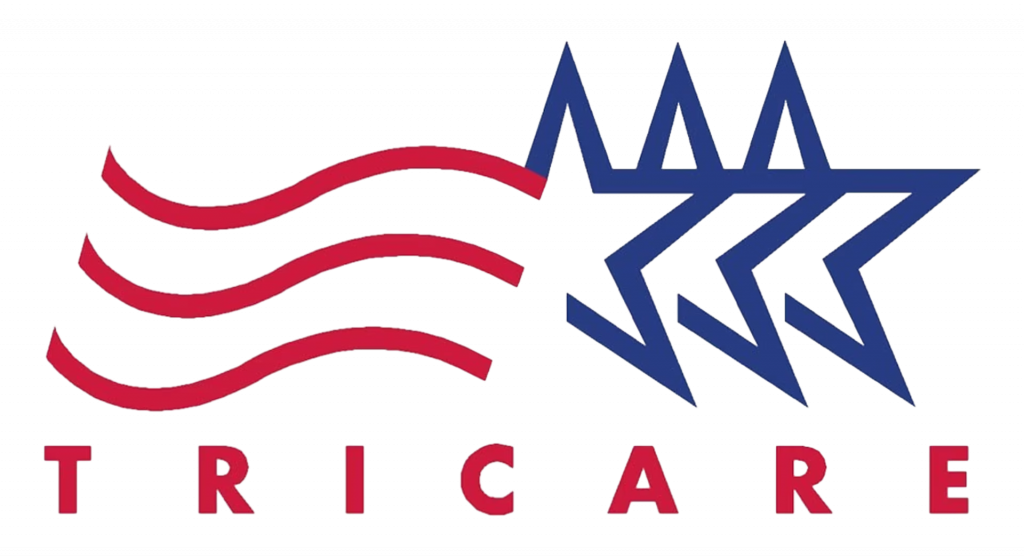TMS therapy has been approved by the FDA as an alternative treatment for depression since 2008.
The majority of our patients see long term relief from symptoms of depression, anxiety, and OCD after completing TMS therapy.
TMS therapy doesn’t require sedation or any invasive procedures. Most patients describe the sensation as a light tap on the head.
Is TMS covered by insurance? In most cases, yes! We accept most major insurances.
TMS stands for transcranial magnetic stimulation. TMS therapy is an FDA-approved, non-invasive, medication-free procedure with minimal side effects. TMS works by using controlled magnetic pulses to awaken parts of the brain that are underactive in individuals with depression, anxiety, and OCD.
TMS uses targeted magnetic pulses to stimulate parts of the brain that are underactive in people who suffer from depression, anxiety, or OCD.
TMS therapy can help reawaken brain activity in these parts of the brain – and result in long-term symptom relief.
During treatment, a TMS wand is applied to parts of your scalp. The TMS machine delivers magnetic pulses to the brain – similar to an MRI machine.
These magnetic pulses aren’t painful. Most patients describe the sensation as a light tap on the forehead.

Why Choose TMS therapy near me at Bespoke Treatment? Our goal isn’t just to provide TMS therapy: it’s to provide the best TMS therapy in Los Angeles, Las Vegas, and Santa Monica.
Personalized TMS uses advanced brain mapping and protocols. We’ll get to know you and your brain’s unique characteristics before treatment begins.
Compared to traditional TMS, personalized TMS can be more targeted, and, therefore, more effective.
Custom-created protocols can result in fewer TMS side effects throughout treatment.
Unlike other TMS facilities, we don’t believe in a standard “one size fits all” TMS protocol. We keep up with the latest in neuroscience and specialize in personalized TMS therapy. When creating your TMS treatment plan, our medical team considers how your mental health disorder manifests in your unique brain functioning.
Clinical studies show that the brains of depressed people have reduced activity in the left dorsolateral prefrontal cortex (DLPFC) region of the brain.
TMS equipment generates an electromagnetic pulse that stimulates the neurotransmitters and receptors in this brain region. This results in a change to your brain activity, which, in turn, helps reduce the symptoms of depression, anxiety, or OCD.
Depending on your mental health diagnosis, you may show reduced activity in other regions of the brain. TMS therapy can help provide symptom relief by stimulating and reawakening brain activity in these regions, too.

At Bespoke Treatment, we only offer personalized TMS therapy. Here’s why: Our independent research has found that personalized TMS therapy’s success rate is significantly higher than standard protocols.
Personalized TMS uses advanced brain mapping and protocols. We’ll get to know you and your brain’s unique characteristics before treatment begins.
Compared to traditional TMS, personalized TMS can be more targeted, and, therefore, more effective.
Custom-created protocols can result in fewer TMS side effects throughout treatment.
Everyone has slightly different symptoms and physiology. We have mastered the art of fine-tuning individual TMS treatment protocols to increase effectiveness.
Based on your results, we’ll tweak your individualized TMS therapy protocol every visit. That can mean changing the duration of treatment, the frequency of stimulation, the number of sessions, and/or the placement on the head to target different brain areas.
These parameters matter a lot when it comes to TMS, but yet they are ignored by most providers.

We’re on the cutting edge of mental health treatments and keep up with the latest in TMS advancements. We offer many different types of TMS therapy to our patients. We’ll work with you to determine the best TMS therapy for you.
A highly effective, advanced TMS option. Treatment takes as little as 3 minutes – perfect for those on the go.
Personalized, fMRI-guided TMS therapy delivered with neurosurgical precision.
Our TMS Therapy Tracks
We highly recommend Theta Burst TMS. Old TMS approaches used to require 18-45 minutes of treatment. But Theta Burst TMS is so advanced you’ll need only 3 minutes per session. Theta Burst Stimulation works quickly because it accurately mimics your brain’s natural rhythms. The result is increased efficacy in a fraction of the time.
With such minimal treatment time, you can come in during lunch breaks for treatment before or after work or school.
If you’ve wondered, “Does TMS work?” or have been wary of treatment because you read TMS therapy negative reviews, fMRI may be for you.
The latest science suggests that when people don’t respond to TMS, it’s because an incorrect part of the brain was targeted. The left dorsolateral prefrontal cortex is always stimulated in TMS therapy. However, this part of the brain is quite large – and difficult to target accurately. Everyone’s brain physiology is a little different. Being just a few centimeters off can render your TMS treatment ineffective. With optional fMRI-guided neuronavigation, our providers can know with confidence that we are stimulating the right part of the brain with neurosurgical precision.
Research over the past five years has demonstrated that accelerated protocols – most commonly defined as 10 TMS sessions per day over only 5 days – can increase the chance of remission as high as 79%, as was shown in the famous Stanford SAINT TMS study. Bespoke Treatment is one of the foremost leaders in Accelerated TMS and has been employing accelerated protocols since 2021.
Deep TMS, also known as Deep Coil or Deep Coil TMS, is typically used for those living with OCD, but can also be effective for those experiencing depression. Compared to standard TMS, Deep Coil allows for deeper penetration into the brain, directly treating deeper brain regions like the anterior cingulate cortex.

Wondering, “Am I a good candidate for TMS?” Bespoke Treatment conducts thorough evaluations to determine if TMS therapy is best for you. Maybe you are looking for alternative treatments for depression that don’t involve medication. Or, perhaps, you’ve tried several medications and haven’t achieved your desired result. If you’re looking for scientifically proven therapies for treatment-resistant depression, you may be a good candidate for TMS.
However, there are some situations in which TMS therapy isn’t appropriate, including if you have metal in your head (dental fillings are fine), a pacemaker, an implanted cardioverter defibrillator, vagus nerve stimulators, or epilepsy.
We’re here to support you throughout your mental wellness journey. Before beginning treatment, we encourage prospective patients to weigh the pros and cons of TMS therapy.
The best parts about TMS are that it is safe, medication-free, has a high success rate, and produces results that last long after treatment. Most major insurers can cover TMS up to 100%.
The negative aspects of TMS are that it can cause mild headaches in some people and the treatment course can require a significant time investment. Patients must come into the office Monday through Friday day for 4 to 8 weeks.
Our Accelerated TMS option allows folks to complete their entire course of TMS in 5 days.
Unfortunately, the downside to Accelerated TMS is that it is not covered by insurance and must be paid out of pocket.
Need help determining if TMS is the right choice for you? Get in touch. We’re happy to help.
Ready to start TMS therapy at Bespoke Treatment? Here’s what you can expect from the process.
After you get in touch, you’ll have an initial consultation with a member of our medical team to ensure TMS is right for you. We will create a treatment plan based on your specific needs, which may change on a weekly—or even daily—basis as symptoms improve.
Before treatment begins, you’ll undergo brain mapping and calibration so that we can create a personalized treatment plan.
At your first TMS session, our team starts mapping your brain to create a custom treatment plan. We will perform initial measurements to find the exact location of your brain’s left dorsolateral prefrontal cortex (LDLPFC). Every scalp and brain is a bit different, so we must get your specific measurements.
We then locate your LDLPFC using a combination of measurements and an advanced algorithm. If you opt for fMRI-neuronavigated TMS, we’ll upload your brain profile directly onto our TMS machine.
Once we’ve located your LDLPFC, we’ll start calibration. During calibration, we find out where your neurons naturally release neurotransmitters. We use this information to customize your TMS settings.
Calibration is achieved when we can make your thumb move – a “motor threshold,” or “initial calibration.”
Once you’re calibrated, you are ready to start treatment.
You will be awake and sit in a comfortable chair during your session. The TMS equipment will be positioned at a specific point on your head.
Once the TMS machine is turned on and treatment begins, most patients report a light – but not painful – tapping sensation on their forehead. Many patients wonder, “Does TMS hurt?” or confuse TMS with “electroshock therapy” or ECT. However, TMS is not painful and couldn’t be more different from ECT.
After treatment, you’ll be free to go about your day as usual. TMS therapy is non-surgical and does not require anesthesia or sedation. Side effects are minimal. Some patients report a mild headache following treatment, which resolves shortly.
We are with you during every single treatment session and are always available to answer your questions or address your concerns.
Accelerated TMS is completed in 5 days, whereas a typical Bespoke Treatment TMS protocol requires 5 visits Monday-Friday for anywhere from 6-8 weeks.
We’ll check in at every session and adjust your treatment plan as therapy progresses to ensure optimal results.
TMS therapy is a highly effective treatment for mood disorders. But how fast does TMS work? The trajectory of improvements varies.
If you want to use your insurance, go ahead and fill out the TMS Pre-Approval form.
We will schedule you for an evaluation with our clinical team at our LA or Santa Monica location.
If you choose to go through your insurance, we will submit all of your information to your insurance company.
Call Bespoke Treatment today or request an appointment online to learn more about how TMS can improve your mental health.









